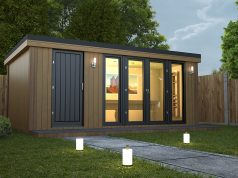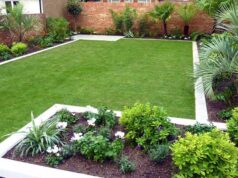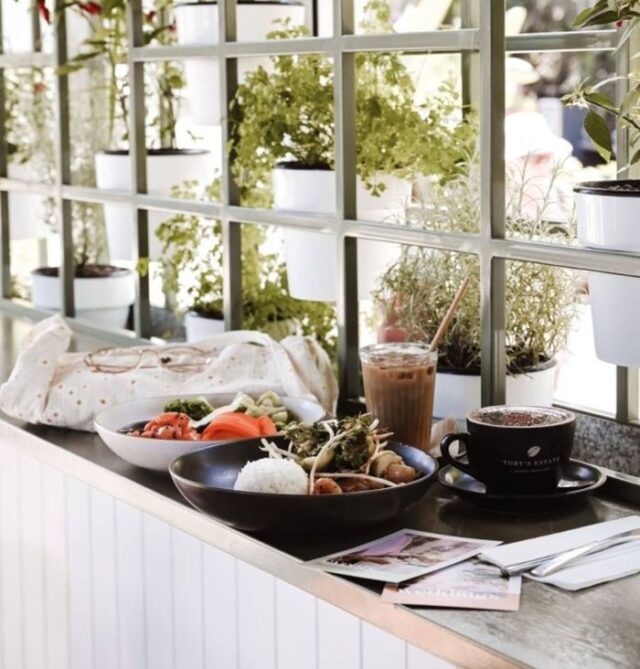
A beautifully designed garden room can be the perfect oasis for relaxation, work, or play. These versatile spaces offer endless possibilities for how you utilize your outdoor space, and with a bit of creativity, they can transform your garden into a functional and stylish extension of your home.
What is a Garden Room?
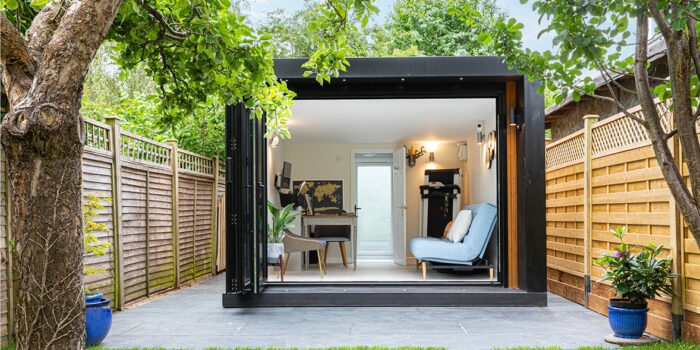
A garden room is a detached or semi-detached structure built within your garden, typically designed to serve a specific function, such as a home office, man/woman-cave, gym, art studio, or guest room.
These rooms come in a variety of styles and sizes, from small, cozy retreats to large, multifunctional spaces.
The key to a successful garden room is designing it with careful consideration of its intended purpose and how it can best complement the existing landscape and architecture of your home.
Three tips to make the most out of your gardening room
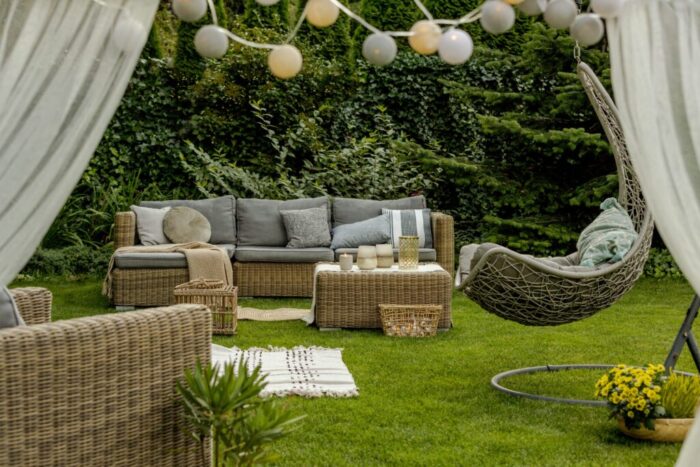
1 Finding the purpose of the room
When designing your garden room, it’s essential to consider its primary purpose, as this will greatly influence your choices for size, layout, and materials.
By taking the time to assess your needs and preferences, you can create a garden room that is both functional and aesthetically pleasing. There are numerous uses for a garden room, and identifying its primary function will help ensure the space meets your specific needs. Some common purposes for garden rooms include:
- Home office: If you plan to use your garden room as a workspace, consider factors such as noise reduction, privacy, ample natural light, and sufficient storage for office supplies.
- Yoga or meditation studio: For a calming retreat, prioritize a peaceful atmosphere with soft lighting, natural elements, and minimal distractions.
- Art or craft studio: A creative space may require durable flooring, ample storage for tools and materials, and plenty of natural light for optimal working conditions.
- Entertainment or game room: If your garden room is destined to be a social hub, focus on comfortable seating, a versatile layout for various activities, and easy access to refreshments.
- Guest suite: A garden room can provide a private, comfortable space for visitors, complete with sleeping accommodations, bathroom facilities, and a small kitchenette.
2 Selecting the right materials
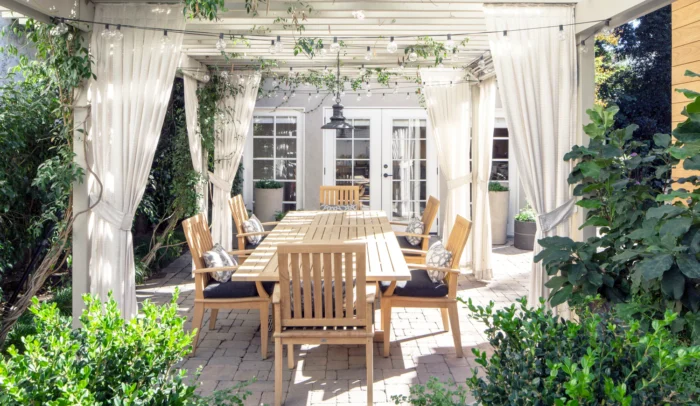
Once you’ve determined the purpose of your garden room, you can begin selecting materials that are both durable and low-maintenance, ensuring the space remains in top condition with minimal effort.
Some material considerations include:
Flooring: Opt for durable flooring that can withstand foot traffic and potential spills. For instance, laminate, tile, or luxury vinyl flooring are easy to maintain and come in various styles to suit your aesthetic preferences.
Insulation: To create a comfortable environment year-round, invest in high-quality insulation materials for your walls, roof, and floor. This will not only help regulate temperature but also contribute to noise reduction.
Double Glazed Windows: According to the experts at Double Glazing Edinburgh the many benefits of double glazed windows are simply hard to ignore. Double glazed windows provide many benefits, including energy efficiency and noise reduction. In addition, these windows are designed to withstand harsh weather conditions, ensuring your garden room remains comfortable and functional for years to come.
Exterior materials: Choose exterior materials that complement your home’s existing architecture and can withstand the elements. Some options include timber, composite materials, or modern metal cladding.
Roofing: Select a roofing material that offers durability, weather resistance, and insulation, such as metal roofing or asphalt shingles. A living roof, covered with vegetation, is another option that can help regulate temperature while providing a visually appealing, eco-friendly solution.
3 Buying the right plants
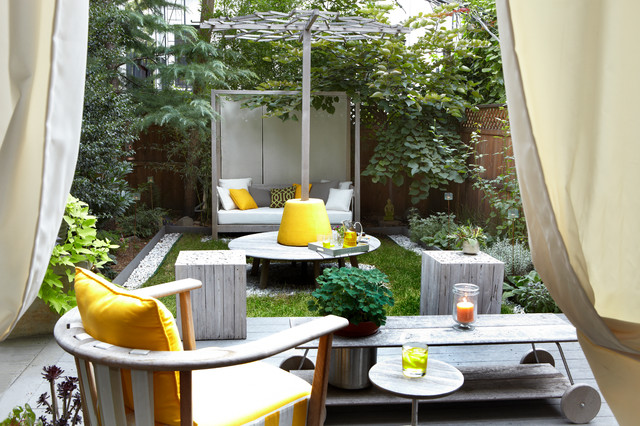
Lastly, adding plants to your garden room not only enhances its visual appeal but also improves air quality and creates a calming atmosphere. Choosing the right plants for your garden room depends on factors such as light, temperature, and humidity, as well as your personal taste and the room’s purpose.
Here are some suggestions for plants that can thrive in a garden room:
1. Low Light Plants:
If your garden room receives limited natural light, consider adding plants that thrive in low light conditions. Some options include:
- Snake Plant (Sansevieria): Known for its tall, upright leaves, the snake plant is a low-maintenance option that can tolerate low light levels and is effective in purifying the air.
- Pothos (Epipremnum aureum): This trailing plant is easy to care for and can adapt to low light conditions. Its heart-shaped leaves come in various shades of green, making it an attractive addition to your garden room.
- ZZ Plant (Zamioculcas zamiifolia): With its glossy green leaves and ability to thrive in low light, the ZZ plant is an excellent choice for a garden room.
2. Medium to Bright Light Plants:
If your garden room receives an abundance of natural light, you can opt for plants that love a well-lit environment, such as:
- Fiddle Leaf Fig (Ficus lyrata): This popular houseplant features large, violin-shaped leaves and can grow quite tall, making it a stunning focal point in a garden room with ample light.
- Monstera deliciosa: Also known as the Swiss cheese plant, Monstera deliciosa thrives in bright, indirect light and adds a tropical touch to your garden room with its large, uniquely-shaped leaves.
3. Air-Purifying Plants:
Improve the air quality in your garden room by incorporating plants known for their air-purifying properties, such as:
- Peace Lily (Spathiphyllum): This elegant plant features dark green leaves and white flowers, and is known for its ability to remove toxins from the air. It prefers medium to low light conditions and requires consistent moisture.
- Spider Plant (Chlorophytum comosum): An easy-to-grow option, the spider plant is known for its ability to remove pollutants from the air. It thrives in bright, indirect light and can be displayed in hanging baskets or pots.
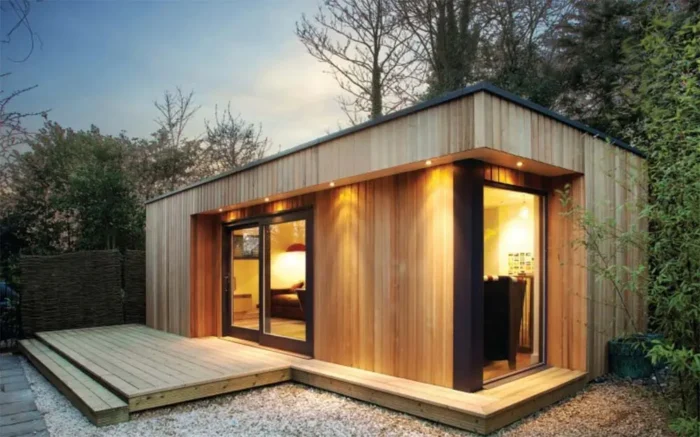
Final Thoughts
In conclusion, a well-designed garden room can unlock your garden’s full potential, providing a versatile and stylish space that caters to a wide array of uses. By carefully considering the primary purpose of the room, selecting durable and low-maintenance materials, incorporating plants that suit the space’s conditions, and installing double glazed windows, you can create a garden room that not only meets your specific needs but also enhances the overall aesthetic and functionality of your home.
Embrace the endless possibilities a garden room has to offer and transform your outdoor space into a stunning, personalized oasis that you and your family can enjoy for years to come.



